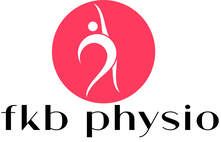The 'mystery' of low back pain
Key points:
- Chronic low back pain is often a result of biological, psychological and social factors, rather than an 'incredibly bad injury'
- The medical system is quite bad at managing low back pain and looks to purely physical treatments (injections, surgeries, manual therapy, etc) with LOW evidence base and poor outcomes
- Exercise and cognitive strategies provide patients with some control over their pain & some self-efficacy over their situation
- As a physiotherapist, I do not believe passive therapies (lying on the bed and having things done) is the way forward for low back pain
LOW BACK PAIN: What's the story?
Probably the most common complaint I have seen in my career as a physiotherapist is low back pain. My understanding of this presentation has changed drastically over the years, and I aim to share some of my thoughts with you, in the hope that you find them useful.
First and foremost: pain is complex
How we feel pain is dependant on many factors, only some of which fall into the purely biological domain. Pain is impacted by our beliefs, our past experiences, our surroundings, and many other things.
Pain is our body’s alarm system.
The International Association for the Study of Pain has outlined the definition of pain as “an unpleasant sensory and emotional experience associated with actual or POTENTIAL tissue damage, or described in terms of such damage.” (Merskey & Bogduk, 1994).
This means that we can experience pain IN THE ABSENCE of damaging stimuli. This idea alone gives weight to the idea that pain does not equal damage. You can be in a great deal of pain, and have no visible tissue damage. The opposite is also true, you can have a terrible looking MRI scan, but be in no pain and have no loss in function whatsoever.
A real life example to help you to consider this concept: Imagine you are doing something you enjoy, like skiing, or swimming in the ocean, or at a music festival. You might hit something accidentally, and sustain a cut or bruise that you find later and have no idea how you got it. Compare this to when you are having a really bad day, and nothing is going your way, and then you stub your toe; the amount of pain you feel is likely to be drastically different, despite the amount of soft tissue damage being equal.
There are numerous extreme examples of circumstances where people have had immense physical trauma, and no pain, or vice versa.
This it not saying that pain is ‘in your head’.
Simply that pain is a product of our brain, and so how we feel it is dependant not only only what is going on at a soft tissue level, but also what is going on in our brains, and in our surroundings. Often, the advice given and words said to people in the early stages of acute low back pain (e.g. you’ve slipped a disc; you might need surgery; you have the spine of an 80 year old; stop going to the gym; stop playing sport; etc) can have disastrous consequences.
This is not only because of the psychological component of pain, but also because we are likely to move and act differently if we believe we have done major ‘damage’ to ourselves.
We are likely to stop moving as much, for fear of doing more damage. We are likely to quit exercising, or sitting for prolonged periods at work, or lifting up our children or grandchildren, because we are worried it might be bad for us. We are likely to become hyper-vigilant about posture and pain, in the belief that we need to be this way in order to protect our backs, when in reality, the opposite is the case.
Often, it is exactly this series of events that leads one to be in chronic pain.
An injury occurs, the person is told they have damaged their back and may make it worse if they do it again. They quit doing things they love, grow more anxious, become less active, lose confidence in themselves and their abilities, lose their sense of control over their bodies, and feel they are simply ‘waiting’ until their back gets better, which often, in this scenario, doesn’t happen.
While their initial soft tissue damage has likely already healed, the pain persists. In these cases people are often sent on an endless cycle of trying to find out ‘what’s wrong with them’, which never yields a result, as the original catalyst for the pain has largely healed, thus creating the challenge of managing chronic pain.
This is often exacerbated by the fact that the neurological system becomes sensitised in those with chronic pain, meaning that the pain signals are ‘turned up’, or amplified, by their body’s pain feedback system. This is a challenging condition to manage.
One of the many drawbacks of our health care system is that despite this being fairly common knowledge, interventions directed at predominantly physical findings for those in chronic pain (e.g. prescription of pain medications, injections, massage, joint mobilisations, even exercise) is fairly near sighted. I will discuss possible management strategies in future posts (within my scope of practice as a physiotherapist only) but I will say that my bias is towards exercise, despite it being a physical modality directed at a biological cause, primarily because it gives the patient back some control and self efficacy, and is less invasive than other treatment options.
A simple treatment option with potentially complex mechanisms by which it may be effective.
Check out my other blog posts on chronic pain & low back pain if you are interested by what you've read above, or if this resonates with you. Feel free to get in touch, if you want to chat a bit more specifically about it.
Reference:
- Merskey H, Bogduk N. Classification of chronic pain, IASP Task Force on Taxonomy. IASP Press; Seattle: 1994

